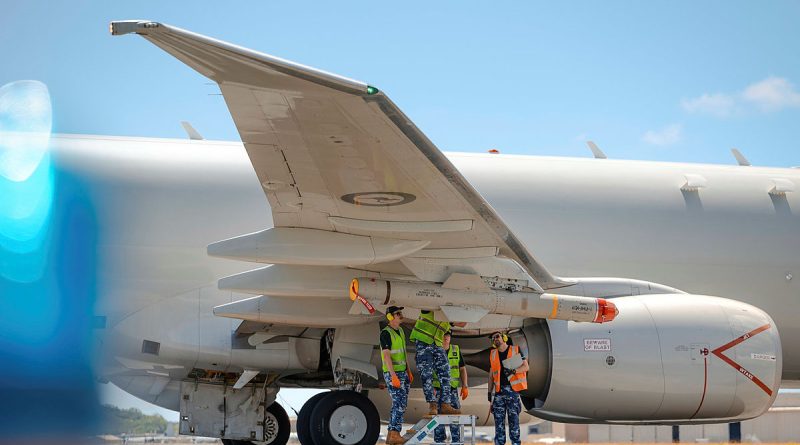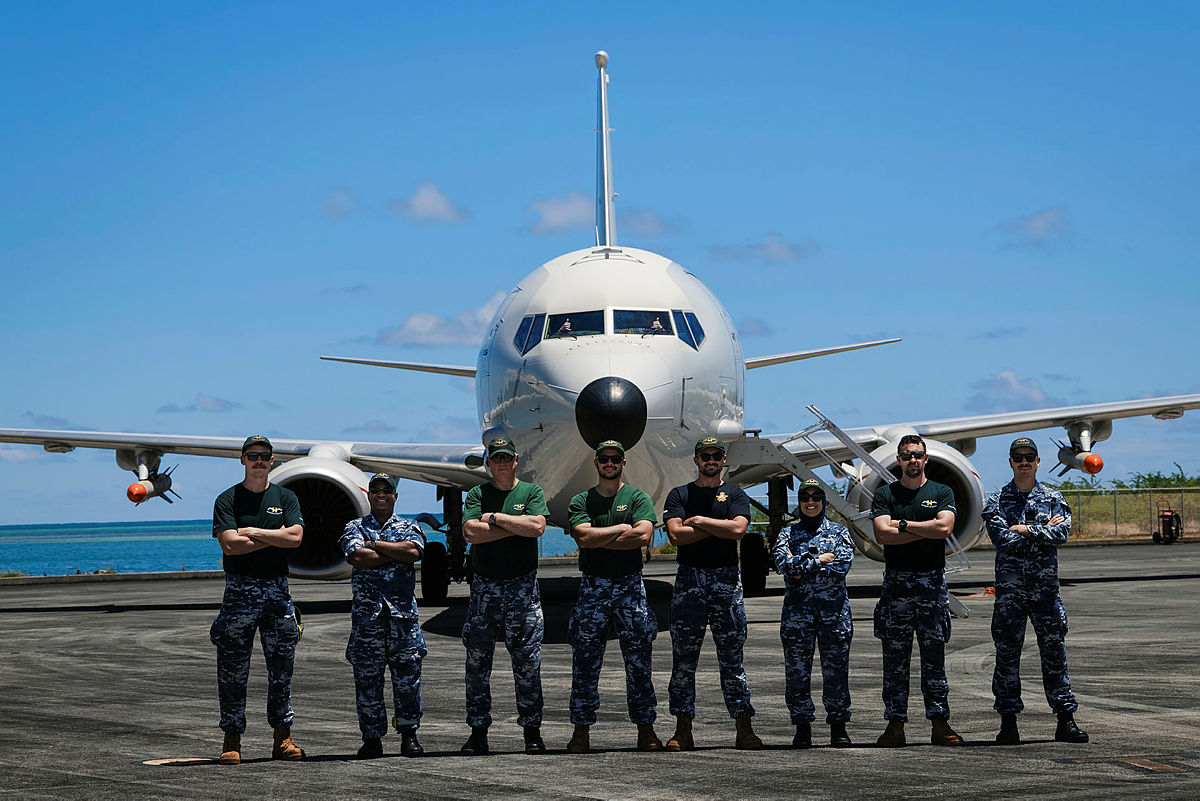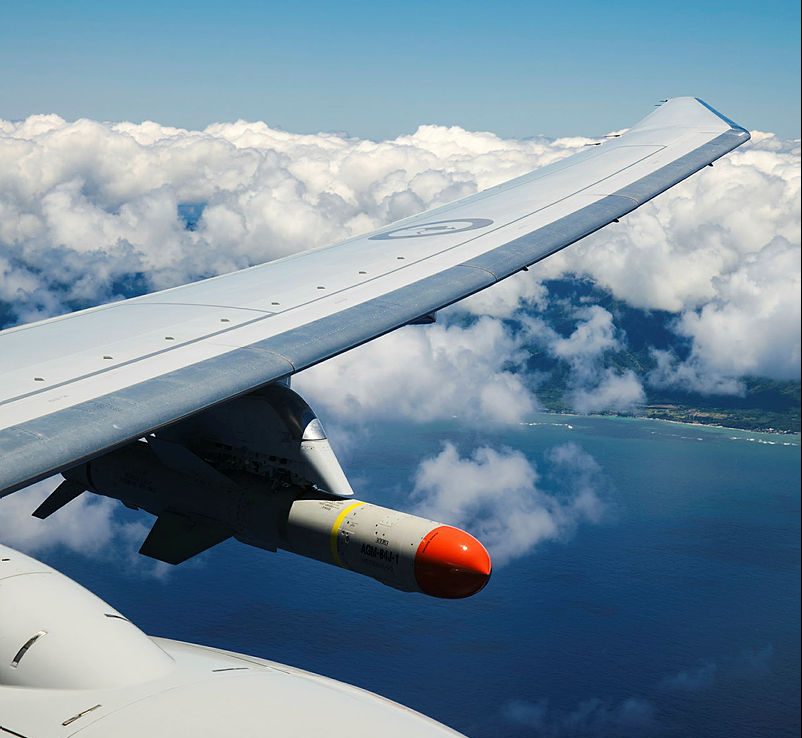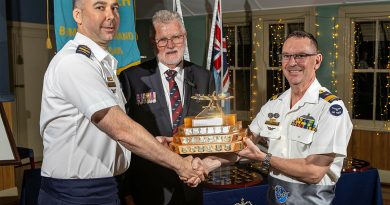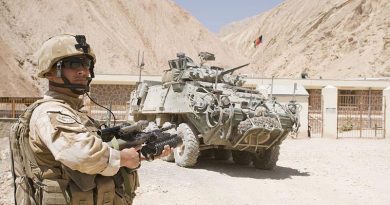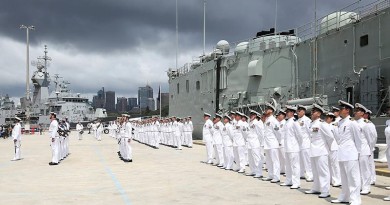Preparing Hammer to strike

The RAAF P-8A Poseidon maritime patrol aircraft – call sign ‘Hammer 24’ – from 11 Squadron in Edinburgh, South Australia, made a quick descent into Marine Corps Air Station Kaneohe Bay on the Hawaiian island of Oahu.
CAPTION: RAAF aviators from 11 Squadron fit an AGM-84J Harpoon anti-ship missile to a RAAF P-8A Poseidon as part of Exercise Rim of the Pacific (RIMPAC), held in the Hawaiian Islands. Story by Lieutenant Carolyn Martin. Photos by Corporal Adam Abela.
It soared across the steep face of a volcanic crater of lush green tropical vegetation on the edge of crystal blue Kaneohe Bay.
Flight Lieutenant Jackson Fullarton described the 20-minute transit from Hickam Air Force Base and the landing into Kaneohe Bay as one of the most enjoyable that he has flown.
“The approach into Kaneohe Bay requires us to fly quite close to some spectacular cliffs while positioning to land on runway 04,” Flight Lieutenant Fullarton said.
“It’s a unique approach that we rehearsed extensively in the simulator before we deployed to Hawaii.”
The Marine Corps Air Station stopover was necessary in order to load two AGM-84J harpoon missiles during RIMPAC 24, an important test for the ground support team tasked with handling the explosive ordnance on a tight schedule.
CAPTION: Air Force aviators from 11 Squadron stand in front of a RAAF P-8A Poseidon aircraft with AGM-84J harpoon anti-ship missiles fitted as part of Exercise RIMPAC.
Flight Lieutenant Matthew Walker, an 11 Squadron armament officer, who oversaw the loading of the missiles said the team of four weapons technicians were working under real-world scenario conditions.
The aim is to load the weapons promptly but not rush the task. There is a step-by-step procedure to follow and several layers of safety built in. Each step of the process is monitored by the team lead and then an independent inspector conducts a final inspection.
“The harpoon is capable of causing significant destruction if handled incorrectly so we have implemented a number of control measures to ensure everyone’s safety,” Flight Lieutenant Walker said.
“The armament team arrived early to take the harpoons out of their cases, completed inspection of the weapons and prepositioned them ready for the arrival of the aircraft.
“When the P-8A landed, we launched straight into action to first make the aircraft safe before loading the two harpoons on each wing of the aircraft using a vehicle called a ‘jammer’.
“The harpoons were moved into position underneath each wing, then carefully raised into the hooks of the aircraft’s suspension equipment until they locked into place.
“After the wings and fins have been fitted, the final step prior to take off is to remove the covers from the exhaust. The harpoons are now live and ready to fire.”
Meanwhile, on board the aircraft the crew gathered for a final briefing from Flight Lieutenant Fullarton before they closed up and departed Kaneohe Bay, ready to fight.
“The flight was an excellent validation of our loading and unloading procedures, and safe carriage of harpoons,” Flight Lieutenant Fullarton said.
“The crew were incredibly forward-leaning; I’m proud of the resilience and agility they have shown during RIMPAC.”
About 320 ADF personnel deployed to Hawaii for RIMPAC 2024, the 28th time the ADF has participated in the biennial international military exercise.
CAPTION: A Royal Australian Air Force P-8A Poseidon aircraft with AGM-84J harpoon anti-ship missiles fitted as part of Exercise Rim of the Pacific (RIMPAC) 2024, at Marine Corps Base Hawaii.
.
.

.
.

